A bedroom is a room where a person can relax, rest and sleep after an active day. Each element of the decor should contribute to relaxation, even indoor plants. It is necessary to carefully approach the choice of home flora of flowers - some are strictly forbidden to be placed in the bedroom, as they lead to poor health. It is worth considering in more detail the requirements and criteria for choosing plants for the bedroom, which of them are recommended, and which are better to refuse altogether.


Plant requirements and selection criteria
Indoor plants are often located in the bedroom, as they can improve the microclimate. With their help, you can achieve the following goals:
- purification of air from dust particles;
- creating a normal level of moisture;
- air saturation at night with oxygen;
- absorption of negative energy.
It is better to give preference to home shady representatives of the flora, which do not require special care, and also do not cause allergic reactions. But even if the flower meets all the criteria, it is better to place it away from the bed.
Home plants need the following care:
- regularity of watering;
- dried flowers and leaves should be cut;
- maintaining a comfortable temperature and humidity;
- transplant with excessive reproduction.


Important! If the flower is afraid of drafts and loves heat, it should be placed away from windows and doors.
When choosing a flower in a room intended for sleep, it is worth taking into account the following tips from professionals:
- Initially, you should familiarize yourself with the biological characteristics of the indoor flower, as well as the nuances of care;
- it is better to abandon exotic plants about which there is no information regarding care;
- for the bedroom, flowers that are characterized by slow growth are perfect;
- if the plants are sick or wilted, they should be taken out of the bedroom;
- indoor flowers should be cleaned in time so that they look neat;
- it is recommended to abandon needle plants, because, in Feng Shui, the character of those living will also become "prickly";
- climbing plants are not recommended at the head.
Recommended Flowers
You should be responsible for the choice of colors for the bedroom, since not all of them have a beneficial effect. For example, some have a fairly strong flavor, while others are poisonous. Nevertheless, a large number of indoor plants are ideal for being in the bedroom. They differ not only in their beautiful appearance, but are also useful and favorable. Let us dwell on the plants that are worth growing in the bedroom
- Chlorophytum. Perfect for purifying the air in the room, as it can eliminate even sulfur and nitrogen compounds, as well as formaldehydes. One adult flower will be enough to provide clean air on 3 m². This plant provides a sterile space. Only a few plants will create a favorable microclimate.

- Spathiphyllum. The second name is female happiness. The plant is ideal for purifying air. It has a positive effect on the nervous system, guaranteeing a sound sleep. Spathiphyllum acts as a kind of filter, because it absorbs harmful substances that are in the air. It releases substances that kill pathogenic bacteria.

- Aloe. It perfectly absorbs toxic substances that are usually released by particleboard. At night, it not only releases oxygen and absorbs carbon dioxide, but also produces volatile products, which adversely affect the pathogenic microflora. The juice of the plant is medicinal.

- Ficus If you need to saturate the air with oxygen, create an optimal level of humidity, and also neutralize toxins, then ficus will be the best choice. Large leaves collect dust very well, which is quite easy to remove. This plant absorbs all poisonous substances like a sponge, after which it processes them into amino acids and sugars. Today, many people prefer to put Benjamin's ficus in the bedroom, it creates favorable conditions for a healthy sleep.


- Hamedorea. It allows you to clean the air of harmful substances and helps to moisturize the air if it is regularly watered, which is very useful during the heating season, when radiators work. This plant is represented by a rather impressive palm-shaped size. It is great for the bedroom.

- Sansevieria. The second name is the pike tail. The peculiarity of this flower is that it produces oxygen at night, and not like ordinary plants. It perfectly absorbs all the harmful substances that synthetic materials usually emit. This plant allows you to increase immunity, because it secretes substances that have antiviral and antibacterial properties.

- Kalanchoe. This plant is also a nocturnal plant, because it is at this time that it releases oxygen. With this flower, you can overcome depression. It releases substances that promote relaxation and sound sleep. The flower attracts attention with its amazing appearance. He is chosen for the bedroom, because it releases volatile, which fight against pathogenic bacteria.

- Begonia. Perfect for placing in the bedroom. Its unobtrusive fragrance helps to cope with depression. The plant is compact, which is very important for small bedrooms.You can use different varieties of begonia to decorate the bedroom. The flower allows you to purify the air, providing deep sleep.

- Asparagus. This plant will bring many benefits, because it has bactericidal properties, promotes the rapid healing of damaged tissues. Due to the complex structure of the leaf, a lot of oxygen is released, which is very important for a good night's sleep. The unusual structure of the sheet perfectly holds dust particles. Having just one plant in a room will provide clean air.
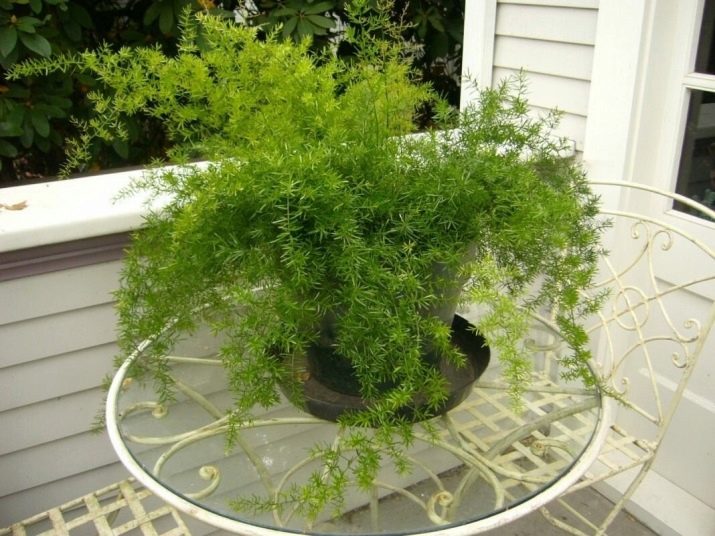
- Dracaena. This plant is a reliable air purifier, so it is often chosen for the bedroom. It perfectly absorbs the harmful substances that modern furniture usually gives off, and also saturates the room with oxygen. For a small bedroom, just one plant will be enough to keep the air in the room constantly clean and fresh.

- Rosemary. This flower is ideal for people who have diseases of the lungs or upper respiratory tract. But it is worth noting that it requires special care. This is an oilseed, from which in ancient times they made essential oil. Rosemary has an unobtrusive and very pleasant aroma. It has a relaxing and calming effect, making it ideal for the bedroom.

- Laurel. This is also an oilseed plant, which is an excellent remedy for insomnia. Laurel secretes substances that help strengthen immunity and treat diseases of the upper respiratory tract. The presence of laurel in the bedroom will help relieve nervous tension and plunge into a deep sleep.

- Geranium. This plant is ideal for placement in the bedroom, because it not only allows you to saturate the air with oxygen and destroy pathogenic bacteria, but also helps to relax, and also has a positive effect on the hormonal background of women. But it should not be placed where a person sleeps, prone to allergic manifestations. This flower will become a guard against viral infections and colds. It is worth noting the attractive appearance of geranium, because it pleases with beautiful flowering almost the whole year.
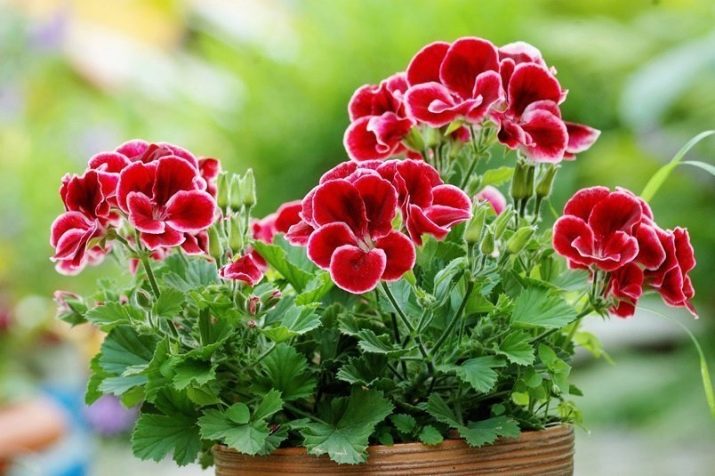
Important! You can arrange in the bedroom an uzambar violet, hibiscus, lavender, money tree, anthurium, Shefler’s flower. But the presence of cacti should be discarded. Also, a dollar tree or zamioculcas should not be placed where you sleep, because it is considered a symbol of celibacy.
Harmful plants for placement in the bedroom
It should be noted in more detail which plants are better to be when placed in a bedroom, since they can be harmful to humans.
- Jasmine. This plant has a slight but sugary aroma that relaxes the person. It has a sedative effect, which is very good during sleep, but staying close to jasmine leads to headaches. Experts advise to refrain from placing jasmine near the bed.

- Hydrangea. This plant is much like jasmine. It also has a strong aroma, which a person may be allergic to, as well as pollen.
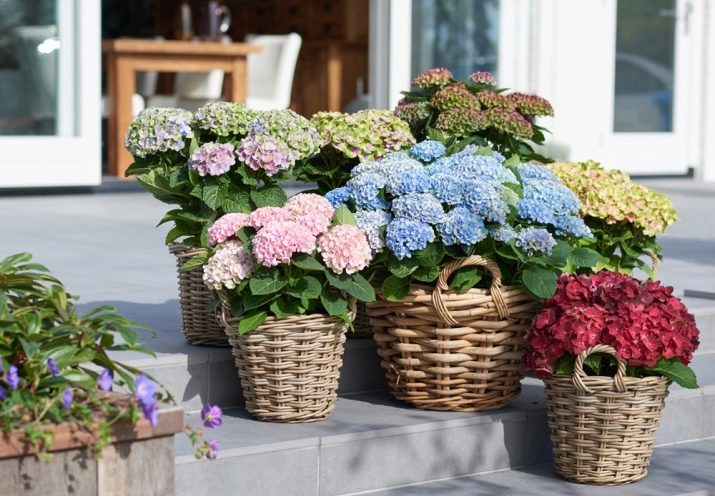
- Orchid. It is better to stay away from the orchid during sleep, because this flower contains strong essential oils, which with prolonged inhalation lead to headaches.

- Lily. This flower can also not be placed near the bed to avoid the harm that it does to the human body. This plant absorbs oxygen, while the room is saturated with carbon dioxide. The fern has the same effect.

- Monstera. It is worth abandoning this exotic plant, although many are attracted by the unusual appearance. It emits harmful substances that contribute to the development of strong manifestations of allergies. It should not, in general, be kept in a house where children or a pregnant woman live.

- Dieffenbachia. It can be placed in the office, but not in the bedroom, since it emits a fragrance, which negatively affects the body, and also leads to severe headaches.

- Euphorbia. You should refrain from this flower, since it emits a lot of harmful substances, which is accompanied by headaches. Juice is especially dangerous, because it can even cause severe poisoning.

Important! Especially dangerous are azalea and philodendron, which not only lead to malfunctioning of the digestive tract, but also provoke convulsions.
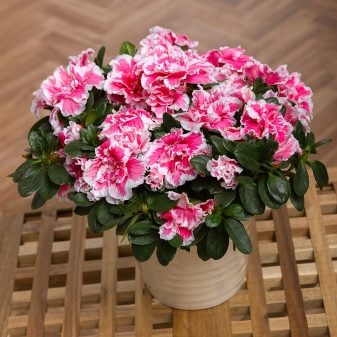
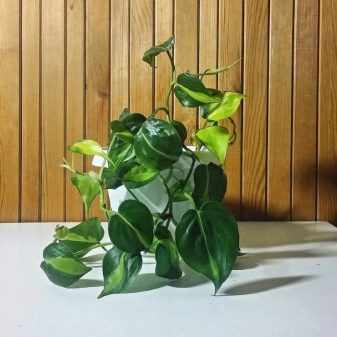
Flower placement tips
Many people choose the arrangement of colors in the bedroom, based on knowledge of Feng Shui. If you like fresh flowers, then you can use only some of their types, while adhering to strict rules:
- in the bedroom you can arrange only 4 flowers;
- if the couple quarrel often, it is worth planting bamboo, and it’s just a couple in one pot;
- if a person has not yet met his soul mate, it is recommended to plant a flowering plant and place it in a love zone;
- not all flowers can be placed in the bedroom, even if they positively affect a person, for example, an orchid personifies the understanding between spouses, but it is better to place it in the office;
- artificial flowers in the interior of the bedroom should be abandoned, since they destroy the vital energy.

Read more about which flowers can’t be categorically kept in the bedroom, and which can and should be in the next video.










